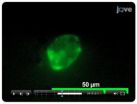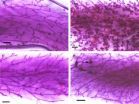Checking off symptoms online affects our perceptions of risk
2012-03-19
(Press-News.org) You've been feeling under the weather. You Google your symptoms. A half-hour later, you're convinced it's nothing serious—or afraid you have cancer. More than 60 percent of Americans get their health information online, and a majority of those decide whether to see a doctor based on what they find. "Wow, this is an era of self-diagnosis," thought Arizona State University psychologist Virginia Kwan, learning that statistic. How might information accessed online affect individual health decisions?
In a new study, Kwan and her colleagues found that the way information is presented—specifically, the order in which symptoms are listed—makes a significant difference. "People irrationally infer more meanings from a 'streak'"—an uninterrupted series whether of high rolls of the dice or disease symptoms of consecutively reported symptoms. If they check off more symptoms in a row, the research found, "they perceive a higher personal risk of having that illness." The study—conducted with Sean Wojcik of the University of California, Irvine, Talya Miron-shatz of Ono Academic College, Ashley Votruba of ASU, and Christopher Olivola of the University of Warwick— appears in Psychological Science, a journal of the Association for Psychological Science.
Surveying cancer-related sites, the researchers discovered that these vary in the way they present common and mild—or "general"—symptoms and more specific and serious ones. To test how streaks affect risk perception, students were presented with lists of six symptoms of a fictional kind of thyroid cancer ("isthmal"). One group got three general symptoms (such as fatigue and weight fluctuation) followed by three specific ones (e.g., lump in the neck); another the reverse order; and the third group a list alternating between general and specific. Participants checked off symptoms they'd experienced in the previous six weeks and then rated their perceived likelihood of having the cancer. The first two orders yielded similar risk ratings. But the ratings were significantly lower when the list alternated.
A second experiment compared lists of 12 or 6 symptoms, this time for a real cancer, meningioma. The three orders were the same as in the first experiment. The effect of order disappeared for the longer, but not the shorter, list—that is, the influence of streaks was diluted when the list was longer. It's possible that even if a participant checked a series of symptoms—leading to suspicion of disease—boxes left unchecked offered reassurance of to the contrary, the authors think.
The findings could prove useful for public health education, Kwan says. "With certain types of illnesses, people tend to seek medical attention at the latest stage." Meanwhile, "people also go to doctors asking all the time about illnesses that are very rare." To encourage people to seek earlier health screenings, grouping common and mild symptoms might be wise. To limit overreaction, the rare ones should top the list. Reaching particular populations is also a public health challenge. "College students think they are invincible," says Kwan. "There are ways to structure information to help them realize there are diseases that don't discriminate."
INFORMATION:
For more information about this study, please contact: Virginia S. Y. Kwan at virginia.kwan@asu.edu.
The APS journal Psychological Science is the highest ranked empirical journal in psychology. For a copy of the article "Effects of Symptom Presentation Order on Perceived Disease Risk" and access to other Psychological Science research findings, please contact Lucy Hyde at 202-293-9300 or lhyde@psychologicalscience.org.
END
ELSE PRESS RELEASES FROM THIS DATE:
2012-03-19
TORONTO, ON—Scientists at the University of Toronto have found a molecular mechanism that plays a key role in the transition of Candida albicans yeast into disease-causing fungus—one of the leading causes of hospital-acquired infection. The finding highlights the importance of heat in fungal growth, and provides a new target for drug therapies to counter Candida albicans infection.
Candida albicans is a normally harmless yeast that is present in all humans. It becomes infectious in various genetic and environmental conditions, with temperature as a key determinant. It ...
2012-03-19
NEW YORK (March 16, 2012)—A rapid increase in shipping in the formerly ice-choked waterways of the Arctic poses a significant increase in risk to the region's marine mammals and the local communities that rely on them for food security and cultural identity, according to an Alaska Native groups and the Wildlife Conservation Society who convened at a recent workshop.
The workshop—which ran from March 12-14—examined the potential impacts to the region's wildlife and highlighted priorities for future management of shipping in the region. The meeting included participants ...
2012-03-19
Glacial meltwater increases biodiversity in mountainous freshwater ecosystems. As glaciers vanish due to global warming, so will those species dependent upon the icy runoff. This is the conclusion of a study authored by researchers from, among other institutions, the University of Copenhagen.
The article "Glacial river biodiversity" with the alarming new findings can be found in the journal Nature Climate Change.
"The knowledge is new and startling. Glacial runoff is cold, nutrient-poor and physically unstable, and therefore, typically species-poor. Traditionally, we ...
2012-03-19
Researchers from Clemson University have found a way to create temporary holes in the membranes of live cells using a standard inkjet printer. The method will be published in JoVE, the Journal of Visualized Experiments, on March 16.
"We first had the idea for this method when we wanted to be able to visualize changes in the cytoskeleton arrangement due to applied forces on cells," said paper-author Dr. Delphine Dean.
She said other researchers have been using this method to print cells onto slides, but that they have only recently discovered that printing the cells ...
2012-03-19
The study's objective was to identify which skills and competencies are considered most critical for primary care providers (PCPs) to learn in order to effectively manage opioid risk in patients treated for chronic pain
Study participants included experts in primary care, pain management, and addiction
Experts in this study identified the most important skills for PCPs managing opioid risk in chronic pain patients as how to monitor opioids and how to assess for risk factors
Primary care physicians are faced with treating a large proportion of chronic pain patients, ...
2012-03-19
The European Union's Habitats Directive is now 20 years old, and its network of protected areas, known as Natura 2000, is nearing completion. After a slow start, the network now includes some 26 000 protected sites and covers approximately 18% of the EU's land surface as well as significant areas of sea. It is widely considered to be the world's largest network of protected areas based on agreed site selection criteria. The review has been published in the newly launched open-access journal Nature Conservation.
Douglas Evans, seconded to the Paris-based European Topic ...
2012-03-19
PROVIDENCE, R.I. [Brown University] — Female mouse fetuses exposed to very high doses of a common industrial chemical that makes plastics more pliable develop significant reproductive alterations and precancerous lesions as they grow up, according to a new toxicology study conducted at Brown University.
The administered doses of MEHP, the chemical that results when animals metabolize the industrial phthalate DEHP, were much higher than any normal environmental exposure that people or animals would encounter, said Mary Hixon, assistant professor of pathology and laboratory ...
2012-03-19
BUFFALO, N.Y. -- Firms that make a previously patented innovation accessible to competitors increase overall likelihood of improving upon that breakthrough while also raising profits for the original innovator and market welfare, according to a study by a University at Buffalo economist.
The practice of free-licensing -- giving up patent protection -- corresponds to an evolutionary step in the study of patents and their effect on innovation, says the study's author Gilad Sorek, assistant visiting professor of economics at UB.
"This research arose from the notion that ...
2012-03-19
TAMPA, Fla. (March 16, 2012) – An international team of researchers from the United States and Australia, including researchers at Moffitt Cancer Center in Tampa, Fla., have found that the oral BRAF inhibitor vemurafenib (PLX4032) when tested in a phase II clinical trial offered a high rate of response in patients with previously treated metastatic melanoma and who had the BRAF mutation. More than 50 percent of the patients in the trial had positive, prolonged responses and a median survival of almost 16 months.
The study was published in a recent issue of the New England ...
2012-03-19
UAB researchers developed a new vehicle to release proteins with therapeutic effects. The vehicles are known as "bacteria inclusion bodies", stable insoluble nanoparticles which are found normally in recombinant bacteria. Even though these inclusion bodies traditionally have been an obstacle in the industrial production of soluble enzymes and biodrugs, they were recently recognised to have large amounts of functional proteins with direct values in industrial and biomedical applications.
The research team led by Antoni Villaverde from the Institute of Biotechnology and ...
LAST 30 PRESS RELEASES:
[Press-News.org] Checking off symptoms online affects our perceptions of risk



